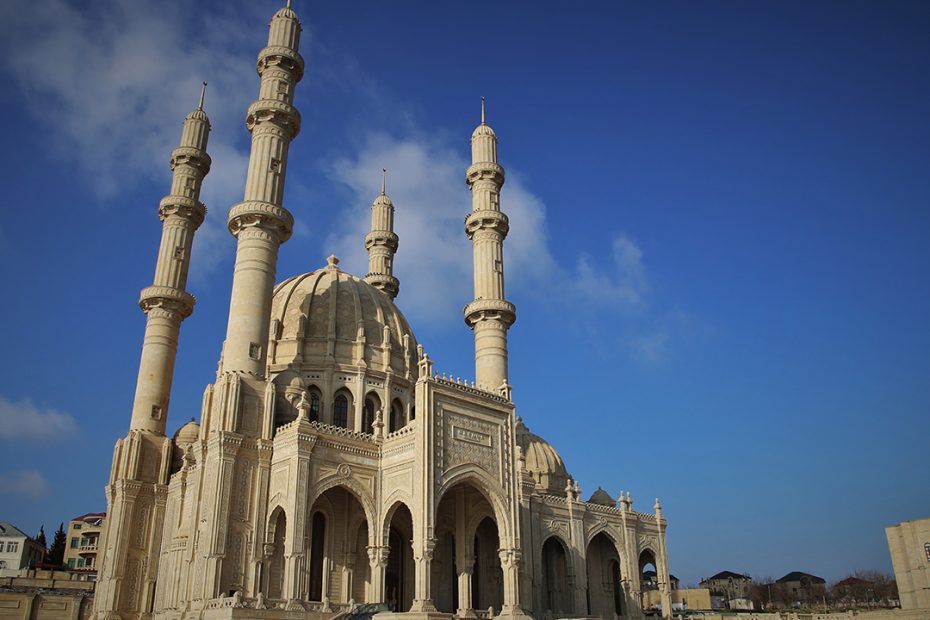A Guide to the Historic and Modern Mosques of Baku
Baku, the capital of Azerbaijan, is a city where East meets West, and tradition blends seamlessly with modernity. Known for its rich cultural heritage, Baku is home to some of the most stunning mosques, both historic and contemporary, each reflecting Azerbaijan’s Islamic heritage, architectural evolution, and unique blend of cultural influences. This guide explores some of Baku’s most notable mosques, from ancient sites to modern marvels, showcasing the diversity and beauty of Islamic architecture in the city.
The Historic Mosques of Baku
1. Juma Mosque (Friday Mosque)
Located in Baku’s Old City, the Juma Mosque, or Friday Mosque, is one of the city’s oldest and most revered mosques. Built in the 12th century, this mosque has witnessed centuries of history. It is known for its distinctive stone architecture, with elegant arches and a traditional minaret that reflects the simplicity and grace of medieval Islamic design. The mosque’s location in the heart of the Old City, surrounded by historical landmarks like the Maiden Tower and Shirvanshah’s Palace, makes it a must-visit for anyone exploring Baku’s rich history.
2. Bibi-Heybat Mosque
The Bibi-Heybat Mosque is another iconic landmark in Baku, steeped in history and religious significance. Originally constructed in the 13th century and later destroyed in the Soviet era, it was meticulously reconstructed in the 1990s. Overlooking the Caspian Sea, the mosque’s emerald green and white exterior, accompanied by its three soaring domes and two minarets, make it an architectural masterpiece. The Bibi-Heybat Mosque is also a revered pilgrimage site, as it houses the tomb of Ukeyma Khanum, a descendant of the Prophet Muhammad. The mosque stands as a powerful symbol of faith and resilience, embodying the strength of the Azerbaijani people.
3. Teze Pir Mosque
Built in 1914, Teze Pir Mosque is one of Baku’s most important historical mosques, located in the heart of the city. Its golden dome, towering minarets, and ornate interiors make it a striking example of Islamic architecture. The mosque’s interior is adorned with beautiful Quranic inscriptions and delicate geometric patterns that reflect traditional Islamic art. Teze Pir Mosque is unique in its architectural style, blending Azerbaijani elements with influences from Turkish and Persian design.
The Modern Mosques of Baku
1. Heydar Mosque
Completed in 2014, the Heydar Mosque is one of the largest mosques in the Caucasus region and a prominent example of modern Islamic architecture in Baku. Named after Heydar Aliyev, the former president of Azerbaijan, this mosque features four towering minarets and a large white marble facade that gives it a majestic appearance. The mosque’s interior is equally impressive, with intricate arabesques and calligraphy covering the walls and ceiling. At night, the Heydar Mosque is beautifully illuminated, making it a spectacular sight in Baku’s skyline and a popular spot for visitors and locals alike.
2. The Blue Mosque (Martyrs’ Mosque)
Situated near Baku’s Alley of Martyrs, the Blue Mosque is a modern place of worship that also serves as a memorial to Azerbaijan’s fallen heroes. Originally built in the early 20th century, it was reconstructed in the 1990s and has become an important symbol of national pride and resilience. The mosque is characterized by its blue-tiled dome and minarets, giving it its name. The Blue Mosque is not only a place of prayer but also a site of remembrance, drawing both worshippers and those who wish to pay their respects.
Cultural and Religious Significance of Mosques in Baku
In Baku, mosques are not only places of worship but also serve as cultural and historical landmarks that embody the spiritual and architectural legacy of Azerbaijan. Throughout the centuries, these mosques have played a central role in the lives of Baku’s residents, offering a sense of community, identity, and continuity. The architectural styles of Baku’s mosques—ranging from ancient stone structures to modern designs—reflect Azerbaijan’s diverse cultural heritage, influenced by Persian, Ottoman, and Caucasian elements.
The Role of Mosques in Azerbaijani Society
Mosques in Azerbaijan are integral to both religious and social life. They host various community events, celebrate Islamic holidays, and provide a place for people to gather, reflect, and connect. In Baku, mosques like Juma Mosque and Heydar Mosque have become community centers where people not only come to pray but also to discuss cultural issues, learn, and exchange ideas. These spaces serve as reminders of Azerbaijan’s Islamic roots while also embracing a more inclusive and modern outlook, welcoming people from all backgrounds.
Visiting the Mosques of Baku: A Blend of Spirituality and Architecture
For visitors to Baku, the city’s mosques offer a unique opportunity to explore Islamic architecture and spirituality in a contemporary, multicultural setting. Each mosque tells a different story of faith, resilience, and tradition, making them more than just places of worship—they are living museums of Azerbaijani heritage.
Whether you are drawn to the historical allure of Juma Mosque, the majestic beauty of the Heydar Mosque, or the spiritual significance of the Bibi-Heybat Mosque, Baku’s mosques are sure to leave a lasting impression. From the Old City to the modern streets of Baku, these sacred spaces invite you to experience the city’s history, spirituality, and architectural grandeur.
